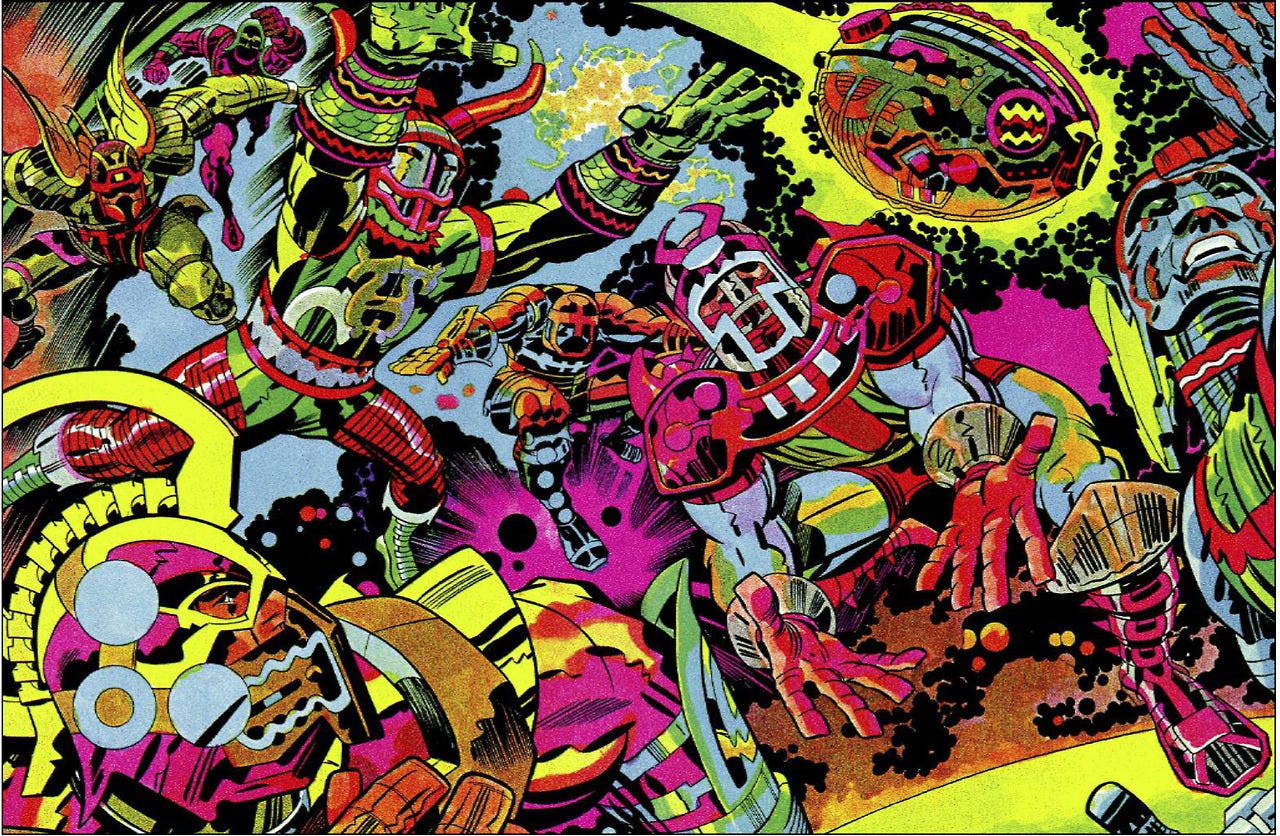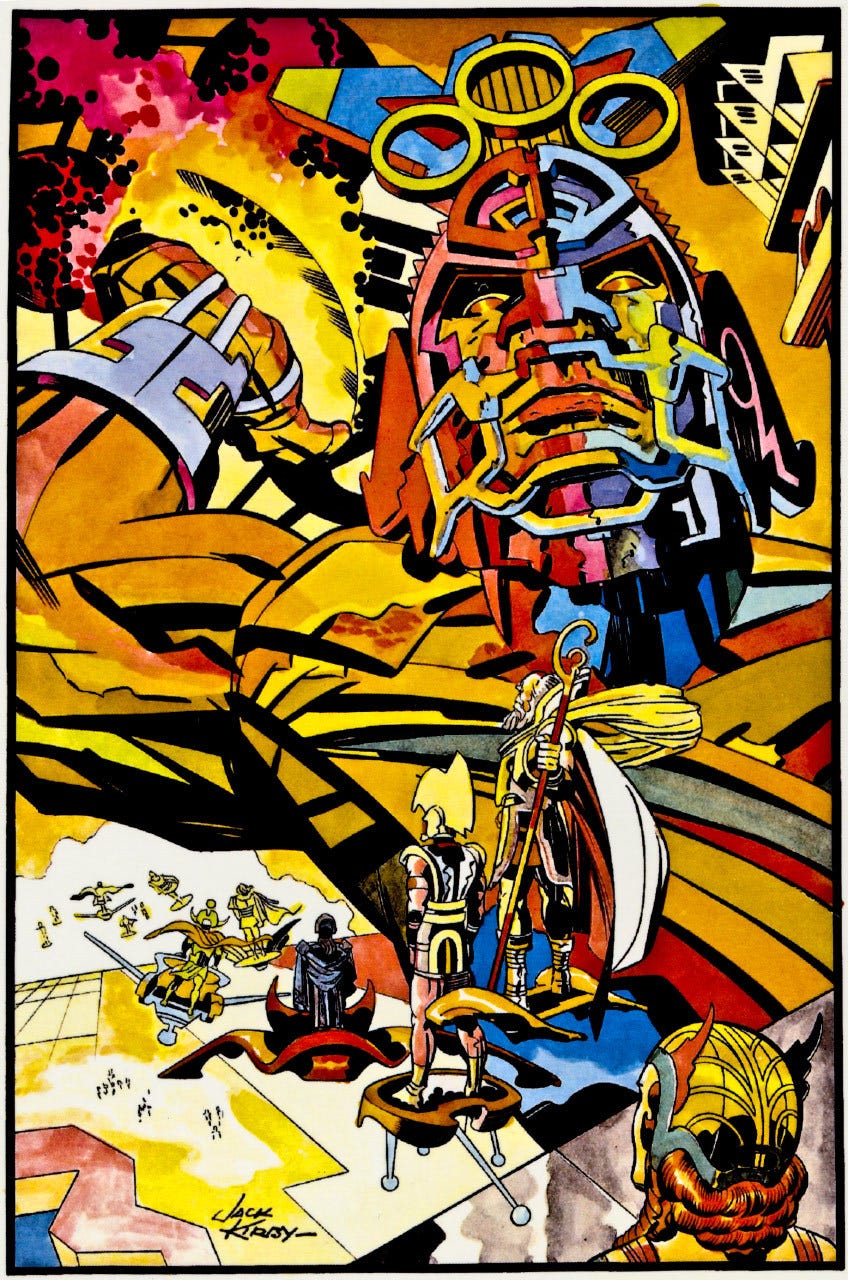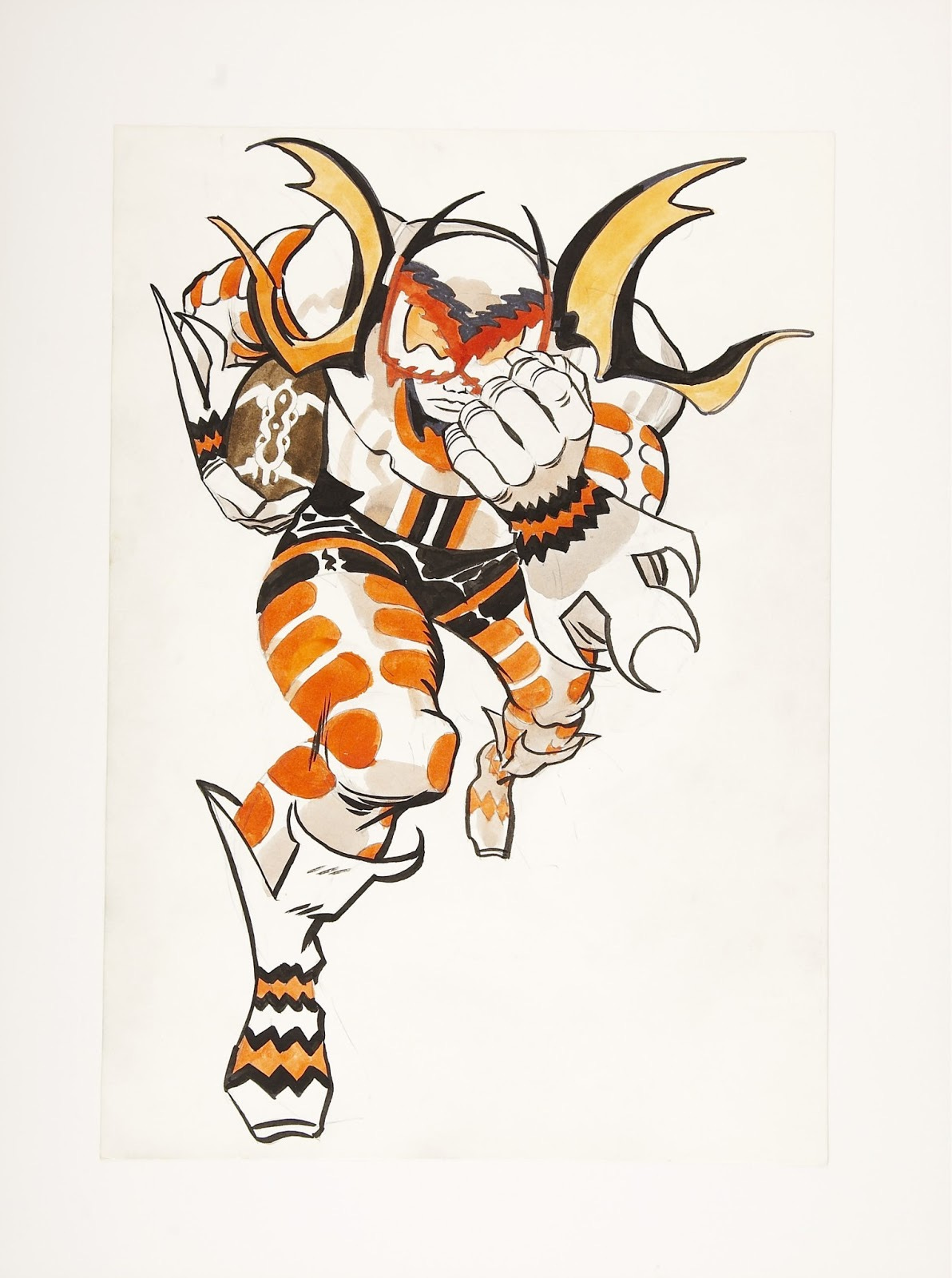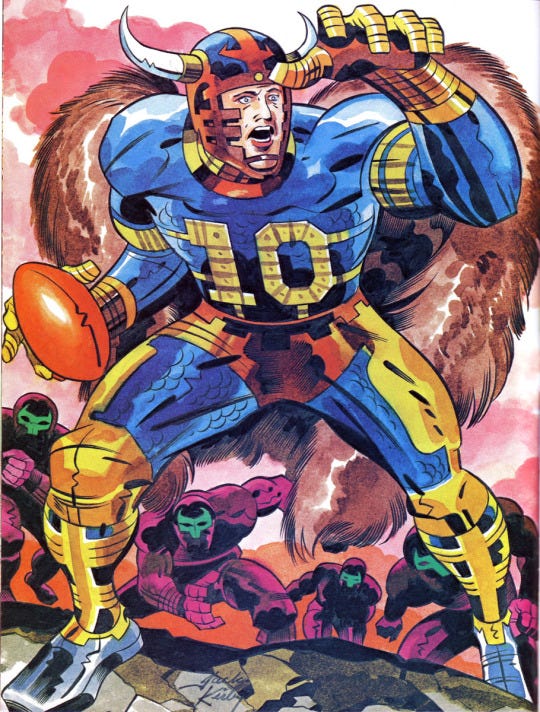Jack Kirby Designed an Intergalactic Super Bowl for the NFL One Time
Featuring the Green Bay Packers from the Black Lagoon
It’s Super Bowl Sunday, and while I really can’t stress enough how much of a sports guy I am not, there is a fascinating 70s sci-fi art angle worth exploring: Jack Kirby’s early-to-mid-70s contributions to Pro!, the official NFL magazine.
I first wrote this article for the Barnes and Noble Sci-Fi and Fantasy blog (RIP), and I must confess that all the jokey captions are courtesy of Joel Cunningham, my editor at the time (now Managing Editor at Lifehacker).
I’ve added a few extra images, but I left in all the references that have not been relevant since Febuary 2016, so you can imagine a more innocent time as you read through this one:
***
Football fans and speculative fiction fans are traditionally considered to be on opposite ends of the cultural spectrum. As any ’80s movie will tell you, jocks are jocks, nerds are nerds, and the best we can hope for is that they’ll at least respect each other by the end of The Breakfast Club.
But in reality, sports fans and SF/F enthusiasts have plenty in common. Both groups love to cosplay, and both pay outrageous sums to attend their favorite fan gatherings. And while Game of Thrones fans are still waiting a few months for the premiere of season six, football fans are settling down to enjoy their 50th season finale. But amid all these similarities, one fact demands attention: Jack Kirby’s zany comic book art style—he’s famous for his trippy Marvel splash pages—works amazingly when depicting the Super Bowl.
At the height of his power in the 1970s, Kirby was commissioned for a feature in the October 21, 1973 issue of Pro! Magazine, the official publication of the National Football League. At the time, Kirby had switched to DC comics from Marvel, and presumably had a little spare time to pick up extra commissions. Hyperbolically titled “Out of Mind’s Reach,” Kirby’s collection of art depicted a future pro football match and debuted bizarre new costume designs for four different teams.

The centerpiece was a double-page spread showing a half-dozen players brawling on an intergalactic grid-iron for a mystic, alien football orb.
Another arresting image displayed visitors making their way towards the match on a precession of hover-boards, no two of which looked alike.

One of the spectators, a bearded gentleman carrying a staff, is strongly reminiscent of Kirby’s take on the Norse god Odin. Then again, Kirby didn’t earn a legacy by shaking up his style: his signature intricate designs, flashy color schemes, dramatic angles, and “Kirby Krackle” are all on display.


Kirby’s costume designs push the boundaries of “fantasy football.” The caption explains that, in Kirby’s eyes, “superstars become super beings,” and this is pretty clear in the superhero-like masks and spandex everyone wears.
The San Fransisco 49er is the only one whose eyes are visible, but the Green Bay Packers get the weirdest re-imagining: their costume is straight out of the Black Lagoon, sporting scaled arms and fins for ears. Either Kirby predicted the effects of global warming would submerge most of Wisconsin, or he didn’t research beyond the “Green Bay” part of the name.


But that cosmic 1973 issue wasn’t Kirby’s final take on the subject of pro football. He was commissioned for a 1975 Pro! issue, this time for a much more down-to-earth work: a depiction of real-life quarterback Fran Tarkenton looking for an opening as a group of goonish linebackers charge him.
It’s realistic enough, but Kirby’s kinetic figures still manage to seem otherworldly.

Some of these pieces have resurfaced in issues of The Jack Kirby Collector (#8 and #51, to be specific), but all of Kirby’s football illustrations remain firmly in the “obscure” section of his vast catalog.
Famed Marvel characters Kirby created or co-created—Iron Man, Captain America, and the Black Panther—will arrive in theaters later this year, but today’s Super Bowl serves as a reminder that Kirby’s legacy powers not just multi-billion-dollar blockbusters, but the cosmic connection between fans of all types.
***
One fun fact I might have added if I had written this article today? The state of football violence in the 1970s. It was a hot topic, with science fiction like Gary K. Wolf’s 1975 novel Killerball and the 1973 short story that was adapted into the 1975 film Rollerball both extrapolating a future society even more interested in bloodletting sports as sort of a “bread and circuses” deal.
In that context, the NFL’s interest in Kirby’s work could be interpreted as a PR move to craft a futuristic image of the sport that keeps the dynamic energy but places it within the context of clean, bloodless, comic-book style action. Which is pretty smart, as far as PR goes.